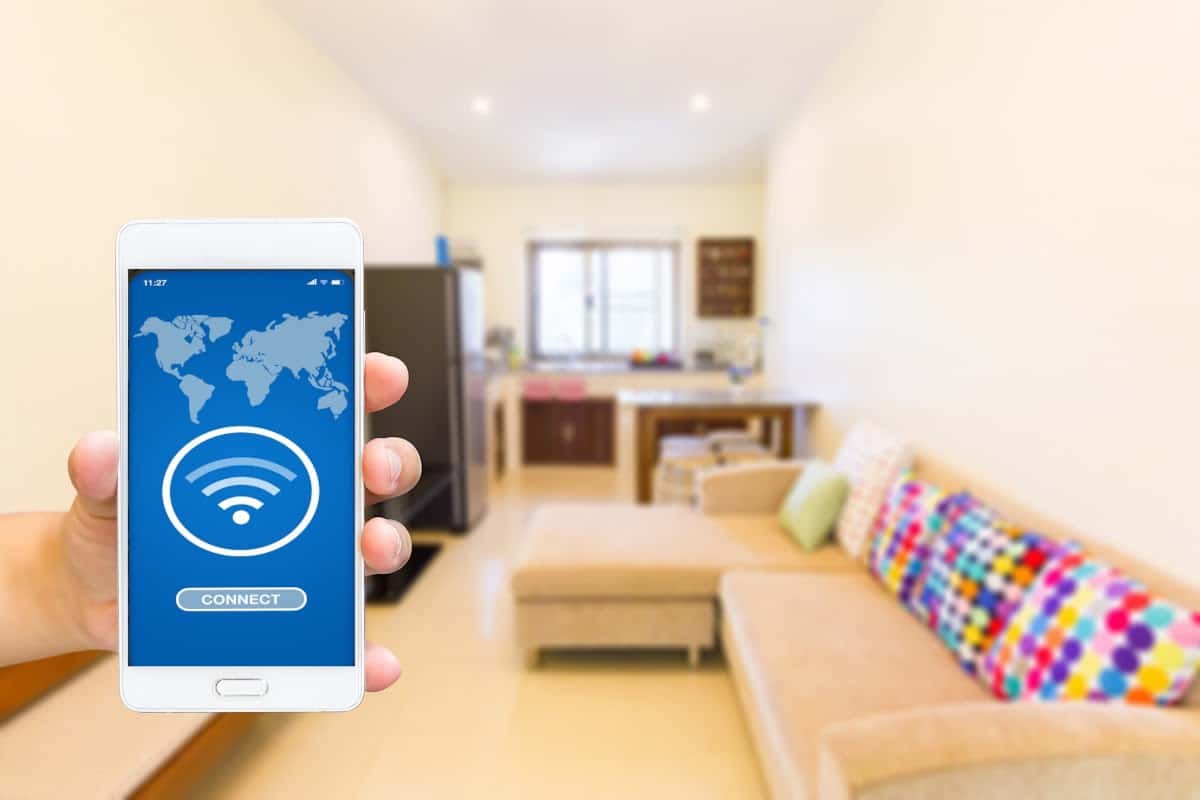Guest wifi networks can be a lifesaver when you have guests over and don’t want them to use up all your bandwidth, don’t want them to know the password to your main network, or when you need a separate network for your printer or other devices. In this guide, we’ll show you how to set up a guest wifi network on your wifi router. We’ll also give you some tips on securing your guest network so that your guests can’t access your main network’s files and devices.
Setting Up a Guest Network On Your Wifi
In this digitally connected world, everyone wants to stay updated, be it at the home, office, or a friend’s house. It’s hard to say no to someone visiting your home when sharing a WiFi password. Sharing a network leads to slowdowns, network disruptions, and security issues. However, setting up a guest network on your WiFi helps overcome these issues. Depending on the router, you can also do some cool things like (slow the bandwidth of your guest network). One of my biggest pet peeves is when someone gets immediate access to my network only to upload photos to cloud storage or update all their apps on their smartphone.
A guest network benefits the network owner in so many ways. Guest networks enhance internet coverage, decrease the slowdown ratio, and eliminate potential security issues.
What Is A Guest Wifi Network?
A guest network is separate from a person’s primary internet connection. It restricts and prohibits the connected devices from accessing the main network. All devices connected to the guest network cannot access the main network.
The guest network has its SSID that differs from the SSID of the main network. Sometimes the devices connected to a guest network are infected (despite the device’s owner knowing or not). If set up properly, these infected devices most likely can’t infect your personal devices on your main network. Guest networks leverage network owners to keep their devices secure from any malware or malfunction activity.
LEARN: Protect Your Home Wifi Network Now!
Is Setting Up A Guest Network On My Wifi Easy?
Setting up a guest network on Wifi is easy. It simply depends upon the router settings. Most routers allow an additional network by routinely logging in as administrators. Some routers require manual settings to access the guest network. However, most of the routers follow the same settings. What is listed below are general instructions on how to set up a guest network. Depending on the router you have, these steps might slightly differ.
Step 1: Access Router’s Admin Dashboard
This is actually easier than one might think. Open any browser of your choice. Type IP address in the address bar. Now press Enter to proceed further. From there you’ll want to enter the admin login information. If you’ve accessed this before, use those credentials. If not, they’re most likely listed on your router.
Step 2: Go To Wifi Settings
When you enter the IP address and press Enter to proceed further, you will see the router’s admin panel. Click on the option of Advanced (or something similar) to access additional settings.
Step 3: Access Guest Network Settings
Click on wireless settings and select the Multiple SSID option (or something similar) from the drop-down menu.
Step 4: Setup Guest Wifi
Setup guest Wifi by following these general steps:
- Guest network options are usually switched off by default. Enable the guest network from the status field and Turn it on (or enable).
- Now name your guest network. Type any name you like in the SSID field and press Enter. This will be what the public sees when trying to connect to your wifi.
- The Access Control will open a drop-down menu. Choose the option of WAN. This option restricts the guest users from accessing any file from the network. This is really important. And if someone wants their network storage accessible to everyone, they should choose the option of LAN-WAN.
Step 5: Secure Guest Network
Security of the guest network is vital to restrict any malfunction. One of the biggest mistakes I see when folks set up a guest wifi is they keep it open for anyone to access without security measures (password). To secure your guest wifi network, follow these steps:
- Choose the option of WPA/ WPA2-PSK from the drop-down menu of Authentication Type.
- Create a strong password and remember it for future use.
- Click on the option of Save to save all the settings.
- A little tip: Remember this area in your admin dashboard because it is a home network security best practice to change your guest wifi regularly (at least once a month).
TRENDING: Can This Device Really Speed Up Your Internet?
Why Do I Need A Guest Wifi Network?
Network security is one of the key reasons to create a guest network. The ones who have access to the password on your main home network may also have access to all potential devices connected to the internet. Smart speakers, WiFi cameras, streaming devices, and printers are all connected to the same network. A guest wifi network prohibits access to all devices connected to the router. There are major security benefits of implementing guest wifi.
And it’s not to say that people you want to share your wifi password with at home do not pose any security harm or threat to others, because 99% of the time they don’t (at least maliciously). But…sometimes, their devices are infected with some malfunctioning activity that passes the security threat to other users. I’m sorry, but you can’t control what others do on their own devices on other networks. And when they connect to your main wifi network, it could present a potential security danger. In such a case, a guest network builds a security wall, restricts access to the main network, and ensures minimal security risk.
DISCOVER: This Router Has Guest Wifi Options And More!
How To Secure My Guest’s Wifi Network?
Data safety is the priority of everyone. Once you have successfully created a guest network, the next step is to secure your network from external threats. Make sure all of your IoT devices are secured by following these steps:
Monitor Internet Usage
Some routers provide statistical information about bandwidth usage. This allows network owners to check who is currently using the Internet and for how long. I can also block certain websites and types of content they access. This again depends on the type of router you have.
Limit The Use Of Bandwidth
Set limit on bandwidth use with wifi guest access management. This enables the owner to keep a check on excessive bandwidth usage activities. As mentioned above, my biggest pet peeve is when a guest gets access to our network (guest wifi or not) and immediately starts the downloading party.
Opt For The Most Advanced Encryption
While installing wifi, you will see security options named WPA, WPA2, and WPA3. WP3 is considered the most advanced security option to encrypt wifi signals, but it is only available in newly released routers. WPA2 is readily available and considered the best option. As for your guest wifi, to make it secure you want to have the best option. Start with WP3. If that isn’t available then try WPA2 and so forth.
Keep Your Guests Connected With A Guest Wifi Network
A guest network enables network owners to share the bandwidth with others without sacrificing the integrity of their network security. This maintains a secure connection and ensures that the devices are not prone to threats. Setting up a guest network provides convenient and smooth internet access and reduces interference with sensitive data. Guest wifi networks are a great way to keep your guests connected and also help you secure your own network. All you need is a spare router and about 10 minutes of your time!








